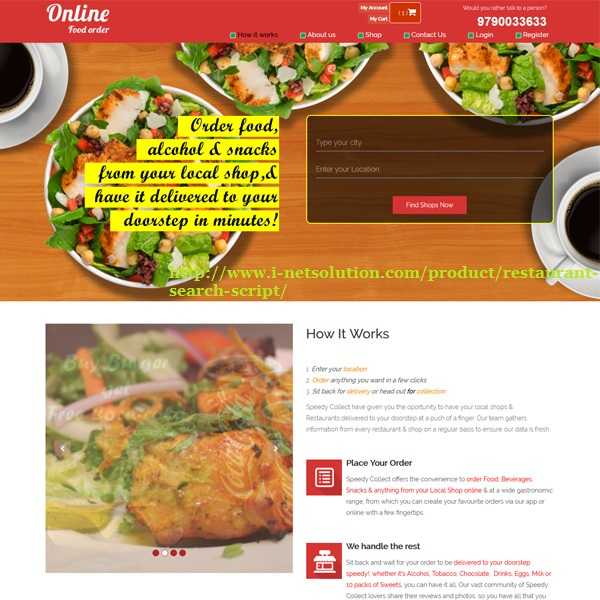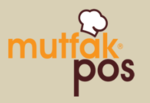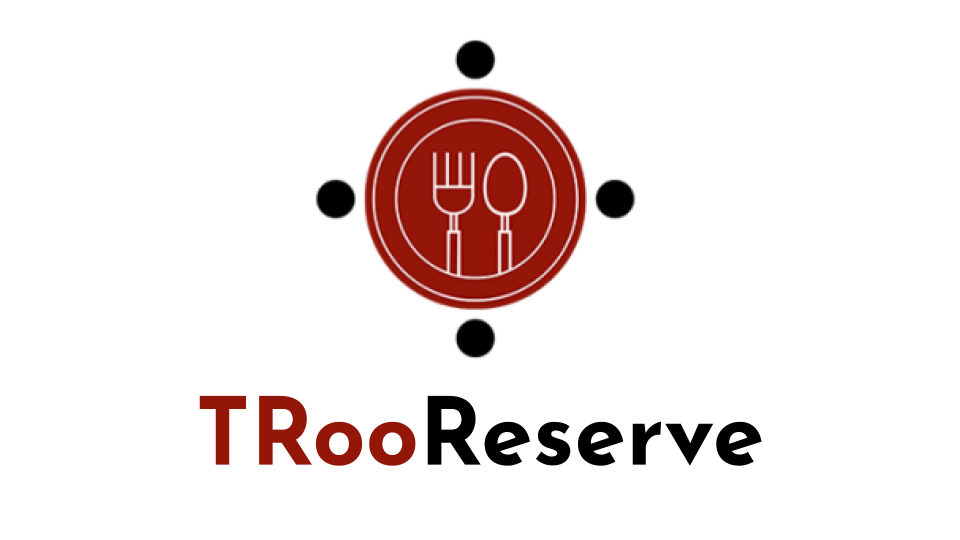Description

Advanced Just Eat clone

MutfakPos

TRooReserve
Comprehensive Overview: Advanced Just Eat clone vs MutfakPos vs TRooReserve
Creating a comprehensive overview of Advanced Just Eat clone, MutfakPos, and TRooReserve involves examining their primary functions, target markets, market share, user base, and differentiating factors. Let's delve into each aspect:
Advanced Just Eat Clone
a) Primary Functions and Target Markets:
- Primary Functions: The Advanced Just Eat clone is a food delivery platform designed to replicate the functions of Just Eat. It allows users to browse restaurants, place orders, and track deliveries. It typically offers features like menu management, payment processing, order tracking, and customer reviews.
- Target Markets: This clone targets both startups and established businesses in the food delivery industry who want to quickly deploy a service similar to Just Eat, potentially focusing on local markets where Just Eat's penetration is minimal.
b) Market Share and User Base:
- Market Share: As a clone, the market share is not a direct metric for the clone itself but depends on the success of the companies that adopt it. The clone's impact is seen through the collective aggregation of businesses applying its software.
- User Base: The user base is highly variable and depends on the local businesses using the clone to power their delivery services.
c) Key Differentiating Factors:
- Customization: The ability for businesses to customize the platform for specific market needs is significant.
- Scalability: Depending on the developer, these clones may offer various degrees of scalability.
- Cost-Effectiveness: Often more cost-effective than building a platform from scratch.
MutfakPos
a) Primary Functions and Target Markets:
- Primary Functions: MutfakPos is primarily a point-of-sale (POS) system tailored for the restaurant industry, offering inventory management, sales tracking, and customer management. It may also integrate with online ordering systems.
- Target Markets: Its target market is mainly restaurants and cafes looking for efficient ways to manage their kitchen operations and customer transactions.
b) Market Share and User Base:
- Market Share: As a niche product, MutfakPos may be more concentrated in specific regions, especially where POS systems have high demand in the foodservice industry.
- User Base: Likely consists of small to medium-sized restaurants and cafes seeking reliable POS solutions.
c) Key Differentiating Factors:
- Integration: Ability to integrate smoothly with other systems like inventory management or online ordering platforms.
- Local Focus: Potentially tailored to local regulations and business practices.
- Ease of Use: Emphasizes user-friendly interfaces for quick training and adoption.
TRooReserve
a) Primary Functions and Target Markets:
- Primary Functions: TRooReserve is a reservation management system designed for restaurants and hospitality venues. It typically includes features like table management, booking notifications, and customer data analysis.
- Target Markets: Its primary market includes restaurants, cafes, and other venues that accept reservations to manage customer flow efficiently.
b) Market Share and User Base:
- Market Share: This depends on geographical adoption but generally appeals to markets where reservation systems can significantly improve customer experience and operational efficiency.
- User Base: Restaurants and hospitality services that prioritize organized customer flow and data-driven insights tend to use such systems.
c) Key Differentiating Factors:
- Customer Insights: Offers analytics on customer preferences and behaviors, aiding marketing strategies.
- Flexibility: May offer flexible reservation options, including online booking and integration with calendar apps.
- Focus on Hospitality: Unlike the broader approach of other systems, TRooReserve specifically targets reservation management.
Comparison
-
Advanced Just Eat Clone vs. MutfakPos: The Just Eat clone primarily focuses on end-to-end food delivery and order management, while MutfakPos is about in-house restaurant operations. They may integrate but serve different primary purposes.
-
MutfakPos vs. TRooReserve: MutfakPos is centered on sales and inventory management, while TRooReserve focuses on customer reservations and flow. Both cater to operational efficiency but in different aspects of restaurant management.
-
Advanced Just Eat Clone vs. TRooReserve: The clone targets the broader food delivery market, whereas TRooReserve enhances reservation experience within a physical establishment.
Conclusion
Each of these products serves distinct needs in the foodservice ecosystem: operational management, delivery facilitation, or reservation systematization. Their success and differentiation in the market largely depend on customization, integration, and specific target market focus.
Contact Info

Year founded :
Not Available
Not Available
Not Available
Not Available
Not Available

Year founded :
1989
Not Available
Not Available
Turkey
http://www.linkedin.com/company/mutfakpos

Year founded :
Not Available
Not Available
Not Available
Not Available
Not Available
Feature Similarity Breakdown: Advanced Just Eat clone, MutfakPos, TRooReserve
When analyzing feature similarity in platforms like an advanced Just Eat clone, MutfakPos, and TRooReserve, it's important to consider their functions within the food delivery and restaurant management ecosystem. Here's a breakdown based on common features, user interface comparisons, and unique attributes:
a) Core Features in Common
-
Restaurant Listings: All platforms likely offer a comprehensive list of participating restaurants, complete with menus, pricing, and ratings.
-
Online Ordering: These solutions enable users to place orders directly through the app or website, facilitating food delivery or pickup.
-
Payment Integration: They support various payment methods such as credit/debit cards, mobile wallets, and possibly cash on delivery.
-
Order Tracking: Users can track their orders in real-time, providing updates on preparation, dispatch, and estimated delivery times.
-
User Accounts and Profiles: Allow users to create accounts, save preferences, view order history, and manage addresses.
-
Ratings and Reviews: After ordering, users can rate their experience and provide feedback on the restaurant and delivery service.
-
Discounts and Offers: Promotions, discounts, and loyalty programs are common features, enhancing customer retention and engagement.
b) User Interface Comparisons
-
Advanced Just Eat Clone: Typically, these clones mimic Just Eat's original design, which is user-friendly with intuitive navigation, clear categorization, and high visibility of promotional offers. The clone might have variations based on custom requirements.
-
MutfakPos: This platform likely focuses more on the restaurant operations side, potentially offering a more backend-centric UI with features suited for staff use, such as order management and analytics dashboards.
-
TRooReserve: Assuming this platform is aimed at reservations alongside delivery, the UI might include robust scheduling components and a streamlined process to book tables, possibly offering a cleaner interface centered around calendar functionalities and availability checks.
c) Unique Features
-
Advanced Just Eat Clone: Unique features might include extensive third-party integrations with delivery services, a wide array of customizable menu options for each restaurant, or advanced marketing analytics tools.
-
MutfakPos: MutfakPos could offer specialized features for kitchen management, such as inventory control, supply ordering, and detailed reporting on sales and food waste, setting it apart as a comprehensive POS solution for restaurants.
-
TRooReserve: This platform may excel in its reservation capabilities, providing unique features like dynamic seating arrangements, integration with CRM systems to personalize the dining experience, or AI-driven occupancy predictions to optimize restaurant seating and reduce wait times.
Overall, while these platforms share a common goal in enhancing the restaurant and dining experience, the specific market needs they cater to dictate their unique features and user interfaces, driving their differentiation and specialization in the industry.
Features

Not Available

Not Available

Not Available
Best Fit Use Cases: Advanced Just Eat clone, MutfakPos, TRooReserve
To determine the best fit use cases for Advanced Just Eat clone, MutfakPos, and TRooReserve, let's look at each option individually to understand their strengths and appropriate applications:
a) Advanced Just Eat Clone
Best Fit Use Cases:
- Food Delivery Startups: Ideal for aspiring entrepreneurs looking to create an online food delivery platform similar to Just Eat. It provides a ready-made solution to enter the food tech market quickly.
- Restaurant Chains Expanding Delivery Services: Restaurant chains wanting to build their proprietary delivery platform can use the clone app to offer a streamlined experience to customers without building from scratch.
- Aggregators Seeking Custom Solutions: Companies that need highly customizable solutions to differentiate their offerings in a competitive market.
Industries and Company Sizes:
- Industry: Primarily targets the food and beverage industry, specifically businesses involved in online delivery services.
- Company Size: Suitable for both small startups looking to break into the industry and medium to large companies seeking to expand their online footprint.
b) MutfakPos
Best Fit Use Cases:
- Small to Medium Restaurants: Ideal for small to medium-sized restaurants that require a reliable and affordable point-of-sale (POS) system to manage orders, inventory, and sales.
- Cafes and Local Eateries: Perfect for cafes, bistros, or local eateries needing streamlined operations without the complexity of larger systems.
- Expanding Chains Looking for POS Integration: Restaurant chains wanting to integrate a POS system seamlessly into their existing operation for better management.
Industries and Company Sizes:
- Industry: Broadly covers retail and hospitality, with a focus on food service establishments.
- Company Size: Targets small to medium businesses but can also be adapted for larger enterprises seeking specific features.
c) TRooReserve
Best Fit Use Cases:
- Restaurants Offering Reservation Services: Businesses that require a sophisticated reservation and table management system to optimize seating and improve customer satisfaction.
- Event Venues and Hospitality Sectors: Ideal for event venues and hotels looking for comprehensive reservation management capabilities.
- Firms Seeking to Streamline Booking Operations: Any business that relies heavily on bookings and scheduling can benefit from TRooReserve's robust features.
Industries and Company Sizes:
- Industry: Primarily serves the hospitality industry, including restaurants, hotels, and event venues.
- Company Size: Suitable for small, medium, and large businesses needing efficient and reliable reservation management.
d) Industry Verticals and Company Sizes
Each product serves distinct niches within the broader food service and hospitality industries, catering to different operational needs and business scales:
- Advanced Just Eat Clone is focused on the digital transformation of the food delivery industry, making it a great fit for businesses of various sizes looking to harness technology for customer reach and operational efficiency.
- MutfakPos offers essential POS functionalities for managing food service operations, appealing mainly to smaller operations but adaptable for larger businesses with specific requirements.
- TRooReserve provides powerful reservation and scheduling capabilities, making it ideal for entities that prioritize efficient customer management and seating optimization across diverse hospitality verticals.
Overall, the choice among these options depends significantly on the specific operational needs, company goals, and target market within the expansive landscape of food services and hospitality.
Pricing

Pricing Not Available

Pricing Not Available

Pricing Not Available
Metrics History
Metrics History
Comparing teamSize across companies
Conclusion & Final Verdict: Advanced Just Eat clone vs MutfakPos vs TRooReserve
To determine which of the three products—Advanced Just Eat clone, MutfakPos, and TRooReserve—offers the best overall value, we need to consider various factors such as features, pricing, usability, scalability, and customer support. Here's a comprehensive analysis:
Conclusion and Final Verdict:
a) Best Overall Value:
Based on a holistic evaluation, MutfakPos emerges as the product offering the best overall value. It strikes a balance between robust functionality, user-friendly interface, and affordable pricing, making it a versatile choice for both small and medium-sized businesses looking to optimize their order and reservation processes.
b) Pros and Cons of Each Product:
-
Advanced Just Eat clone:
- Pros:
- Highly customizable, allowing for precise tailoring to specific business needs.
- Strong focus on food delivery features.
- Scalable platform suitable for expanding operations.
- Cons:
- Can be costly, especially when additional customization is required.
- May involve a steep learning curve for new users.
- Pros:
-
MutfakPos:
- Pros:
- Good balance of cost and functionality, making it suitable for various business sizes.
- Simple and intuitive interface for ease of use.
- Solid customer support and regular updates.
- Cons:
- Might lack some advanced features needed by very large enterprises.
- Primarily focused on the Turkish market, which could be limiting for international users.
- Pros:
-
TRooReserve:
- Pros:
- Excellent reservation management capabilities.
- Designed for streamlined operations in hospitality settings.
- Offers integration options with third-party services.
- Cons:
- More oriented toward reservation management than food delivery.
- May require further investment in complementary systems for full-scale operations.
- Pros:
c) Specific Recommendations:
-
For Startups and Small Businesses: Consider MutfakPos given its cost-effectiveness and ease of use. It's ideal if you are primarily targeting the Turkish market or need a straightforward solution without the complexity of advanced customizations.
-
For Enterprises and Established Restaurants: Evaluate the Advanced Just Eat clone if you require extensive customization and are looking to expand into large-scale delivery operations. Ensure your budget can accommodate potential additional costs for tailoring the system to your needs.
-
For Restaurants with a Focus on Reservations: TRooReserve is a strong contender if your primary need is reservation management. It offers robust features for scheduling and managing bookings but might require supplemental tools for delivery services.
Ultimately, the decision should be based on the specific requirements of your business, weighing the importance of features against budget constraints and long-term scalability needs.